Last updated: August 15, 2018
Article
Cabrillo Peregrine Pair Raises Four Chicks
July 2018 - Starting each February, Cabrillo National Monument volunteers and natural resources staff eagerly await low or minus tides, but not for the excellent tidepooling as you might expect. Rather, it is the opportunity to hike out on otherwise submerged rocks for a view of the cliffs above. There, they can record sightings of a pair of the world’s fastest animals, peregrine falcons, which have nested on the cliff since 2014.
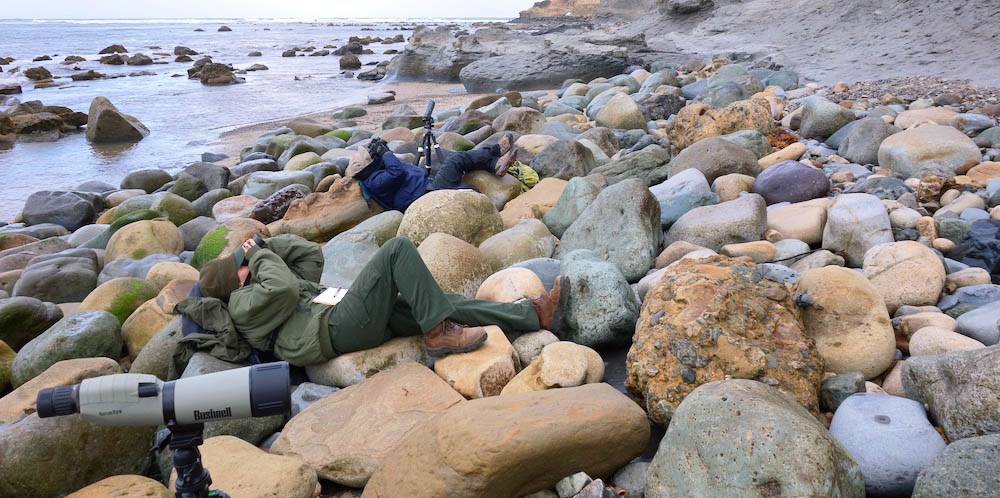
NPS / Don Endicott
Watching breeding and nesting peregrine falcons, which are famous for diving at speeds of over 240 mph to catch prey mid-air, can be thrilling. Cabrillo volunteer Don Endicott describes some “truly indescribable” moments and “quite an adrenaline rush while observing and recording so many comings and goings”. At the same time, monitoring Cabrillo’s peregrines is an important scientific endeavor.
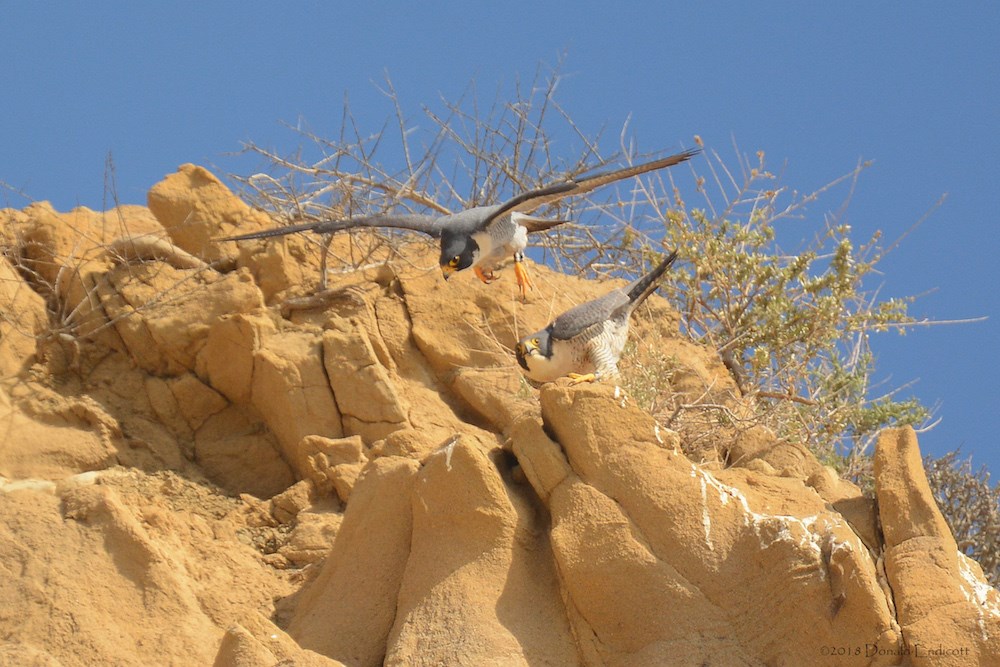
NPS / Don Endicott
For starters, monitoring helps the park figure out how to best protect peregrine habitat and minimize human impacts. After all, it hasn’t always been the case that peregrines have been doing as well as they are now. They were once on the brink of extinction due to the widespread use of an insecticide known as DDT. Once DDT was banned, conservation biologists were able to help peregrines make their comeback. Still, threats persist and change, and regular monitoring is a useful tool for alerting us early if there is a problem.
Monitoring also helps enable leg banding, which gives biologists the chance to learn more about the survival and whereabouts of the juveniles long after they’ve fledged (left their nest). Observing Cabrillo’s peregrine pair helps biologists figure out when the birds have chosen a nest site and laid their eggs, which informs when to look for signs of hatching. Establishing a hatch date in turn informs when biologists should enter the nest to examine the nestlings and apply numbered and colored leg bands that uniquely identify each bird.
This year, Don and his fellow Cabrillo peregrine observers got their first view of the peregrine pair in late February. Thanks to the birds’ leg bands, they were able to establish that it was the same pair that nested in the park in 2017. In early March, they recorded numerous courtship and breeding interactions, and later figured out the likely nest ledge. They confirmed the presence of chicks, known as eyases, by watching the female apparently feeding them in mid April. April 30 was set as the banding day, when the eyases were expected to be around 20 days old, the optimal age for banding.
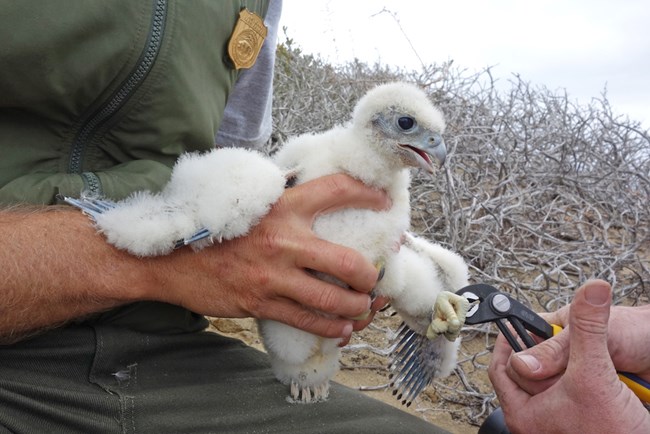
NPS / Don Endicott
On banding day, everyone got their first look at the eyases themselves as climbing raptor biologist Diego Johnson rappelled down the cliff to temporarily retrieve them from their ledge. There were four: two males and two females, just like last year. Volunteers assisted as biologists weighed, measured, and banded them one at a time. Each bird was assigned two leg bands: one silver federal leg band from the U.S. Geological Survey, and another black band with white numbers and letters that is meant to be easy to read from a distance. Diego then returned the young birds to their ocean-view ledge. To see if there are continued effects of DDT on the falcons even today, he also collected eggshell fragments for later examination in a lab. If there are, thinner than normal eggshells are an indicator.
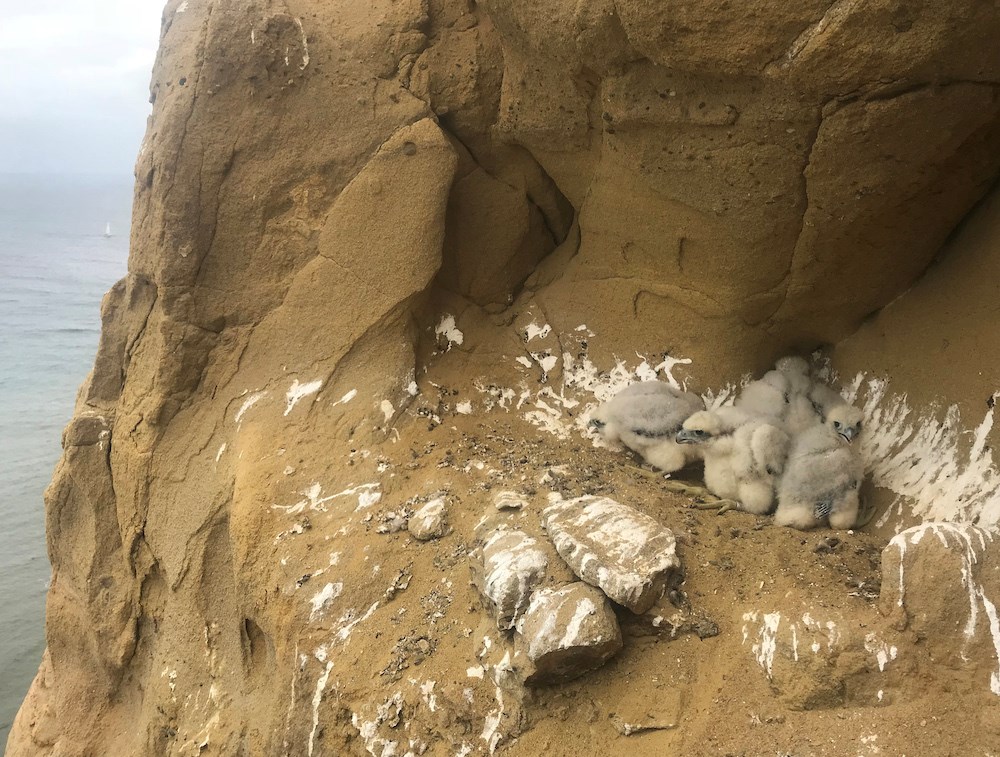
NPS / Diego Johnson
Following banding day, monitoring continues to record the juveniles fledging, typically when they are around six weeks old. Fledging this year took place in late May. Now, Cabrillo visitors may also be able to catch glimpses of them from some of the park’s viewpoints as they exercise their wings and learn to hunt. They continue to depend on their parents for meals for a couple of months after fledging, but will soon be moving on in search of their own territories.
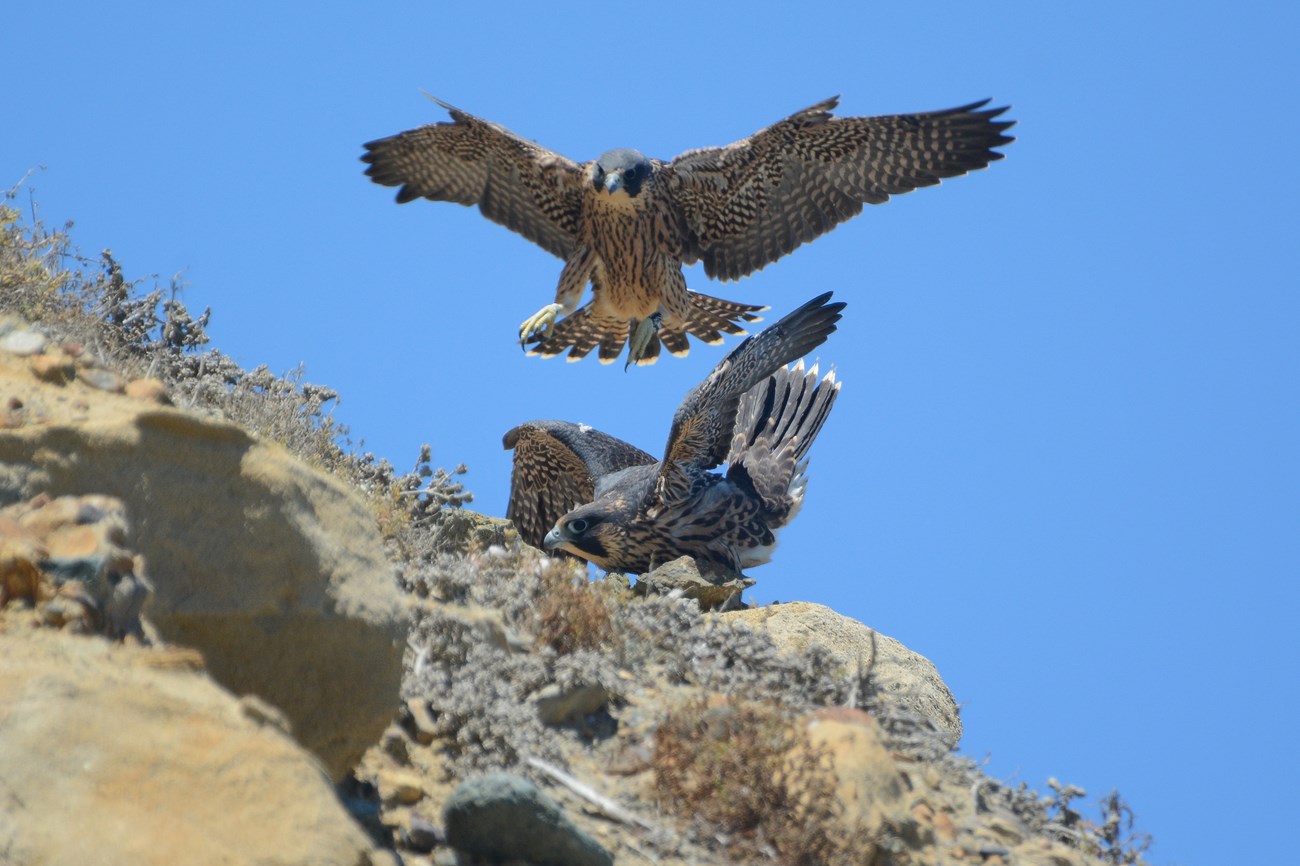
NPS / Don Endicott
Get Don Endicott’s full account of the 2018 peregrine falcon monitoring season, including many more amazing photographs and summaries of seasons past, from the Cabrillo Field Notes Blog.
Prepared by the Mediterranean Coast Inventory and Monitoring Network.
